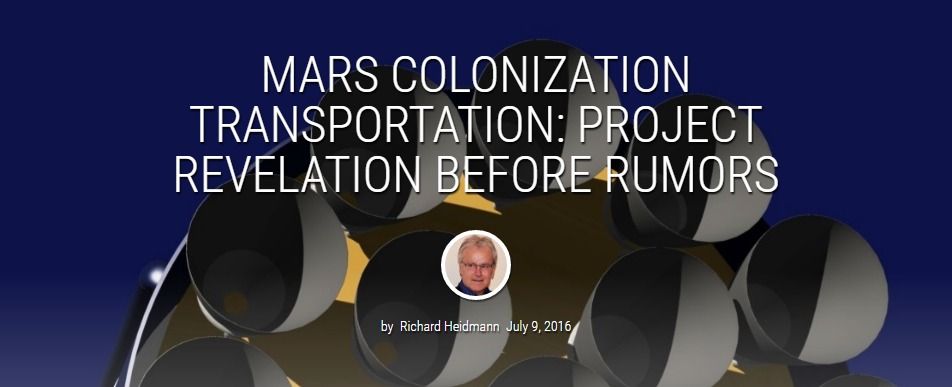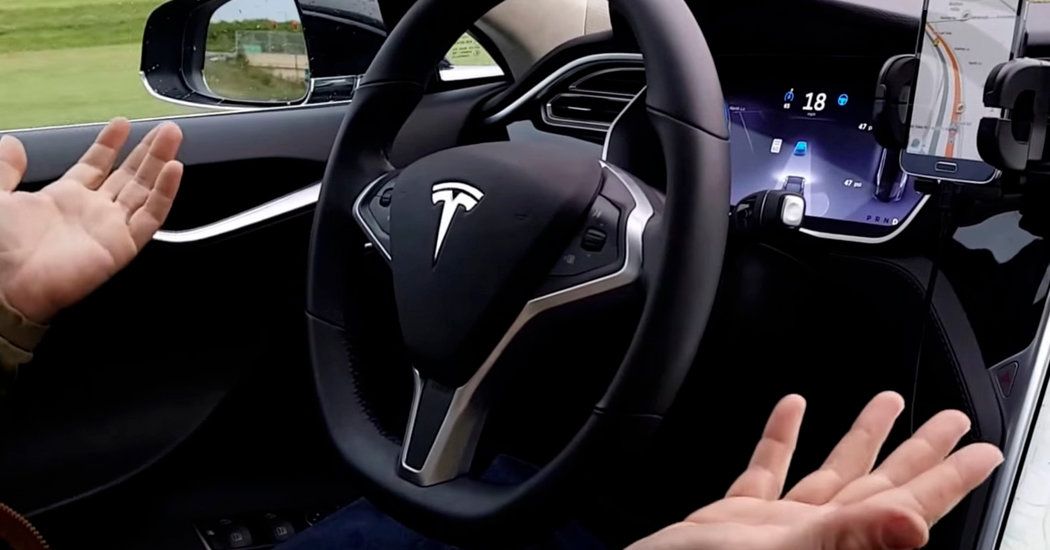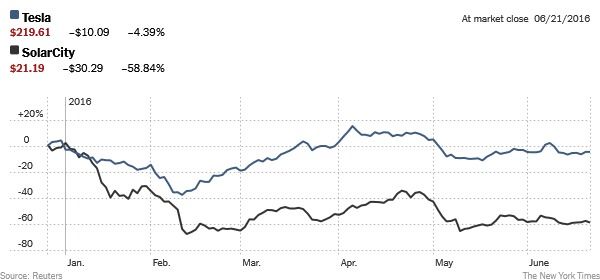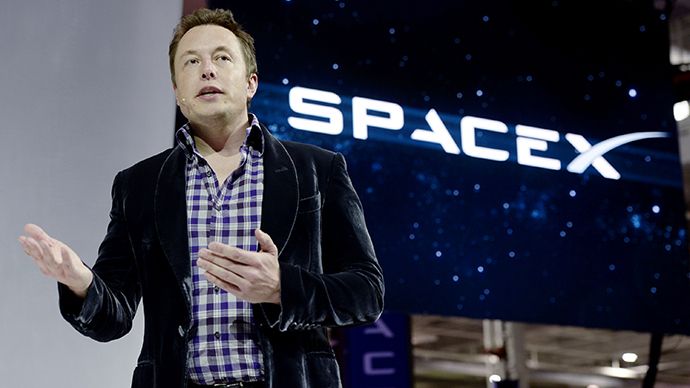““The factory is the machine that builds the machine,” Musk says, sitting in the lobby of his new building.”
Category: Elon Musk – Page 280
Elon Musk planning radical TRIPLE rocket landings that could take man to Mars
Not content with landing its fifth rocket, Elon Musk has unveiled plans the land three rockets at once.
SpaceX has applied for permission to build new landing pads at the Cape Canaveral HQ it leases from NASA.
It would allow all three main rockets of the firm’s upcoming Falcon Heavy to land back at base before being prepared for reuse.
Elon Musk Warns that DARPA A.I. Hacking Challenge Will Lead to Skynet
He may or may not be joking.
Russia’s hyperloop dream is undone
Sad for Russia.
President Vladimir Putin and other Russian officials dream of a technological leap that could immediately close the gap between Russia and more advanced economies, as Sputnik did for the Soviet Union. The hyperloop, a kind of train in a tube that can reach speeds of up to 700 mph, fits that dream, and a well-connected Russian businessman has invested in it — only to see the project become embroiled in a lawsuit involving a Silicon Valley startup’s founders and claims of financial mismanagement.
Elon Musk, Tesla’s chief executive, proposed the hyperloop four years ago. This “fifth mode of transport” would involve a system of practically airless tubes through which magnetically levitated pods could carry passengers and cargo. Musk has not set up a company to bring the project to reality, but others have. For example, Hyperloop Transportation Technologies, wants to build a system in Slovakia. Another, Hyperloop One, offered a public demonstration of some elements of its technology in May.
Hyperloop One has seemed the most advanced project, and Russian investors showed an interest from the start. The state-owned Russian Direct Investment Fund took a small stake in the company, but Ziyavudin Magomedov, head of Summa Capital, was the most enthusiastic Russian investor, putting up money for both of the company’s funding rounds.

Mars Colonisation Transportation: Project Revelation Before Rumours
Translated this intriguing article for English readers about our soon to occur Mars-Colonisation, and prospective announcements at the upcoming SpaceX Event!
In our analysis of end 2015 (available on our website, and its summary in the English section) we tried to discern what might look like the project SpaceX Mars Colonization Transportation (MCT), Elon Musk has finally unveiled Sept. 27 at the next International Astronautical Congress. This year included the meagre clues gleaned from the various statements of the contractor, some alter the previous information (eg abandonment of multi-body launcher formula type Falcon Heavy) or, coercion, seemed to confirm the fundamental options such as refuelling earth parking orbit by a second launcher, the total reuse and descent of March of the entire interplanetary shuttle ( “landing the whole thing”). Since then, other indications of various origins have appeared on fans forums. Examine their possible significance.
The choice single-body launcher recoverable and we had driven to approach the performance target (100 T Payload deposited on Mars) to increase the diameter of the drive bay 15 m, although it seemed sufficient to limit that of upstairs itself to 12.5m (pm the first two stages of the Saturn 5 moon had a diameter of 10 m). This configuration allowed to stay a maximum of 31 engines of 300 T thrust and achieve take-off weight (GLOW) 7750 T. Unfortunately, the shape flared rear of the first floor, certainly favourable to the stability phase of ascent, is very unfavourable for the return (flight in opposite direction), especially since it has less then effective ways to stabilise the trajectory. Since it is difficult to imagine that we can reduce the GLOW and therefore the take-off thrust, the solution is to increase the diameter of the whole floor to 15 m. Now it is one of the rumours on forums “MCT-geeks”; SpaceX had solicited tooling suppliers for this diameter.
At the time, it evoked a Raptor 250 Tf thrust (optimal size for mass according SpaceX). Wishing nevertheless not to increase the number of engines (compared to what is allowed with the Falcon Heavy), we considered it necessary to increase the engine thrust to 300 Tf, that remained liveable in the 15 m the Bay. The problem is that even with this power, the desired performance is not achieved (unless we assume our assumptions about the structure of the masses too pessimistic shuttle); Indeed there were 90 T CU (referred to 100) and more in the most favourable conditions: Mars at perihelion and transfer long (Hohmann). But a noise is that SpaceX would work on a Raptor 700 Tf! This level of unit thrust would exceed the planned takeoff thrust, reached with 13 of these engines easily Lodgeable. Given the performance deficit, we can imagine that SpaceX, once the diameter of 15 m admitted, will seek to accommodate the maximum engine.

A Fatality Forces Tesla to Confront Its Limits
This couldn’t of happened at a worse time. Everyone was starting to ramp up for self driving cars. It looked like everyone was going to start taking them to market in 2020. This one incident might move things back 5 years.
Elon Musk’s confidence in Tesla’s technology has seemed boundless, but trying to stay ahead of the competition has posed risks.

Elon Musk’s new company is developing robots to do your housework
For most people, housework is the absolute worst, and it’s kinda weird how in 2016, we still don’t have anything remotely like Rosie the robot maid, who vacuumed the hell out of the Jetsons’ house.
Well, it might finally be our time, because multitasking entrepreneur Elon Musk just announced that his new robotics firm, Open AI, will be developing ‘domestic robots’ that can perform basic household chores.
To accelerate the process, Open AI will be developing the robots based on technology that already exists — basically, it’s going to be taking off-the-shelf robots and customising them to do housework.

Elon Musk Aims to Shore Up SolarCity by Having Tesla Buy It — By Michael J. de la Merced and Peter Eavis | The New York Times
” … Tesla Motors said on Tuesday that it had offered to buy SolarCity in an all-stock deal, one that could value the latter at as much as $2.8 billion. The aim, Mr. Musk argues, is to create a renewable-energy giant, collecting clean electricity and putting it to work propelling cars.”

SpaceX lays out a roadmap to getting humans to Mars in a decade
Elon Musk, the founder of SpaceX, has always had the dream of sending the human race to Mars. Now, thanks to SpaceX’s advancements, that dream is not far off. In an interview with The Washington Post, Musk divulges some new details on his plan to get to Mars.
The first step in his plan is to send an uncrewed spacecraft to Mars as early as 2018. These missions will continue every two years when Earth and Mars are at closest approach supplying rovers and science experiments to the Red Planet, and testing pertinent systems of the spacecrafts.
“Essentially what we’re saying is we’re establishing a cargo route to Mars,” Musk told The Post. “It’s a regular cargo route. You can count on it. It’s going happen every 26 months. Like a train leaving the station.”
Elon Musk: The Hyperloop is easy, my interns can do it
The ideal long distance transportation mechanism is a supersonic vertical take off and landing electric jet.
Elon Musk is the billionaire CEO and Chief Designer of (SpaceX). Builders of the most advanced space rockets in the world, and others.